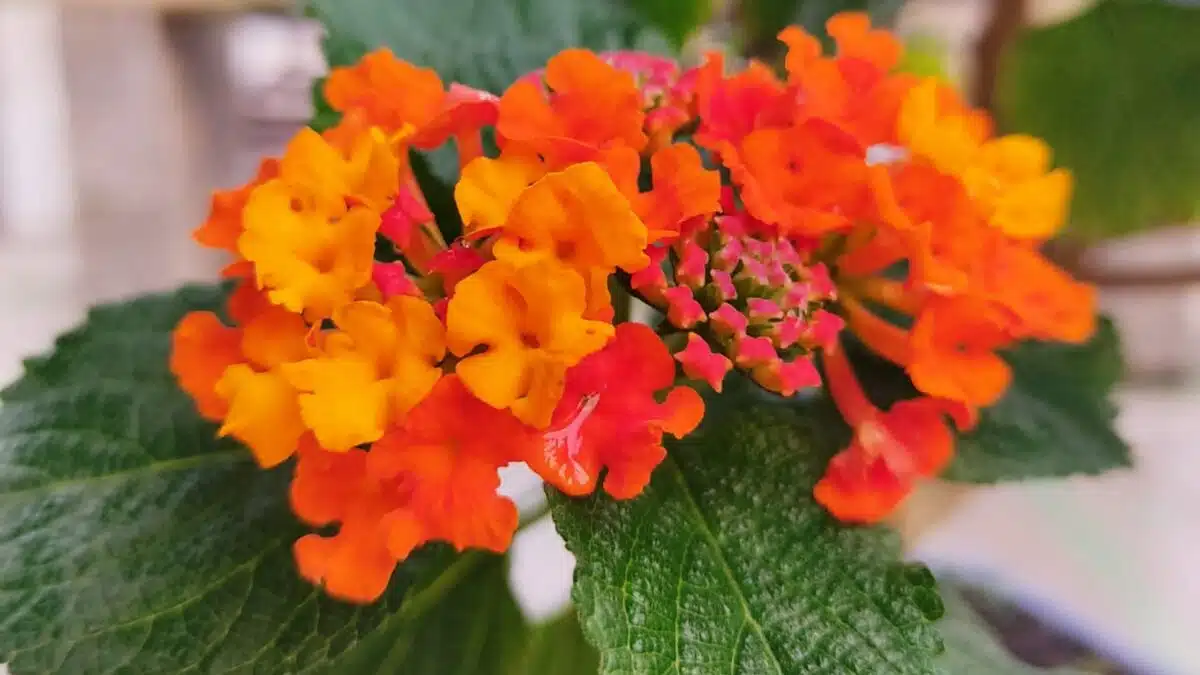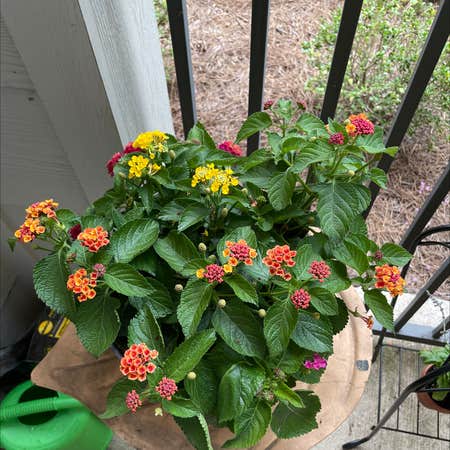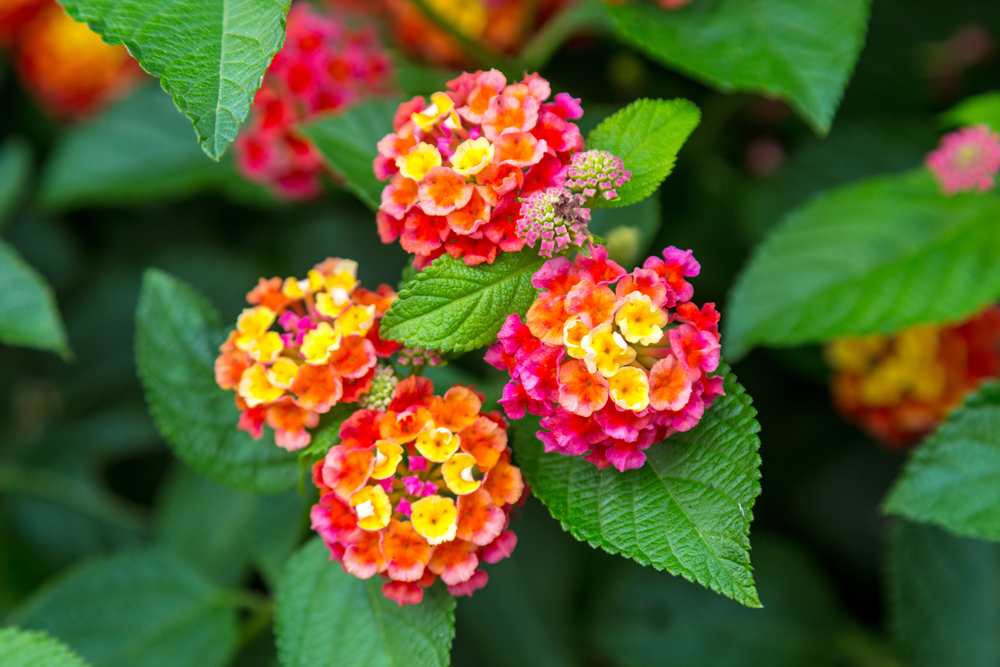Water the West Indian Lantana bonsai tree when the top inch of soil feels dry. Prune regularly to maintain its shape.
The West Indian Lantana bonsai tree, known for its vibrant flowers, is a delightful addition to any bonsai collection. This hardy plant thrives in sunny locations and requires well-draining soil to prevent root rot. Regular watering is essential, but be cautious not to overwater.
Fertilize the tree during its growing season to promote healthy growth and vibrant blooms. Pruning helps maintain its compact shape and encourages new growth. This tree is relatively low-maintenance, making it ideal for both beginners and experienced bonsai enthusiasts. Regular checks for pests and diseases ensure your bonsai stays healthy and beautiful year-round.
Introduction To West Indian Lantana Bonsai
Caring for a West Indian Lantana Bonsai involves regular watering, pruning, and proper sunlight exposure. Ensure well-draining soil to prevent root rot and encourage healthy growth.
Origins And History
The West Indian Lantana has roots in the Caribbean and Central America. It thrives in warm, tropical climates. This plant made its way to other parts of the world. Now, it is popular for its colorful blooms and hardy nature. Gardeners often choose it for bonsai due to its adaptability.
Unique Characteristics
The West Indian Lantana features vibrant flowers in clusters. These flowers can be pink, orange, yellow, or red. The leaves are small, which makes them perfect for bonsai. This plant is also known for its aromatic foliage. It can grow in various soil types, which adds to its appeal.

Credit: www.mistralbonsai.com
Choosing The Right Plant
Pick plants with vibrant green leaves. Avoid plants with yellow or brown spots. Check the roots. They should be white and firm. Avoid mushy or black roots. Healthy plants resist diseases better.
Opt for compact varieties. They are easier to shape. Lantana camara is a popular choice. It has bright flowers. Lantana montevidensis is another good option. It has trailing branches. Both types make beautiful bonsai.
Planting And Potting
The West Indian Lantana needs well-drained soil. Loamy soil works best for this plant. Add organic matter to improve soil quality. Keep the soil slightly acidic for optimal growth. Avoid waterlogged conditions to prevent root rot. Regularly check soil moisture levels.
Select a shallow pot for your bonsai tree. Ensure the pot has drainage holes at the bottom. A ceramic pot is a good choice for aesthetics. The pot size should match the tree’s root system. Avoid pots that are too big or too small. Use a tray to catch excess water.

Credit: greg.app
Watering Needs
The West Indian Lantana bonsai tree thrives with moderate watering. Ensure the soil remains consistently moist but not waterlogged. Regularly check for dryness and adjust watering frequency accordingly.
Optimal Watering Schedule
The West Indian Lantana Bonsai needs regular watering. Water the soil when the top layer feels dry. Ensure the water reaches the roots but avoid pooling. Use a watering can with a narrow spout for precision. Morning is the best time to water your bonsai. This helps the plant absorb moisture throughout the day. Always use room temperature water for the plant.
Signs Of Overwatering And Underwatering
Yellow leaves can mean overwatering. Mushy roots are a serious sign of too much water. Brown, crispy leaves mean the plant is thirsty. Dry soil for long periods is harmful. Drooping leaves can also indicate underwatering. Always check the soil before you water.
Pruning Techniques
Prune your West Indian Lantana in early spring. This helps the tree grow strong and healthy. Use clean, sharp tools to avoid damage. Cut back branches that are too long. Also, remove any dead or damaged parts. Pruning helps the plant look neat and encourages new growth. Always make cuts just above a node or leaf.
Good tools are essential for effective pruning. Use sharp pruners for small branches. Loppers are better for thicker stems. Pruning saws can be useful for very thick branches. Always sanitize tools before use. This prevents the spread of disease. Keep tools sharp for clean cuts. Store tools in a dry place to avoid rust.
Fertilizing Tips
Use a balanced liquid fertilizer for West Indian Lantana Bonsai. Consider fertilizers with equal parts nitrogen, phosphorus, and potassium. Organic fertilizers are also a good choice. Fish emulsion or seaweed extract can provide extra nutrients. Avoid fertilizers with high nitrogen levels. They can cause excessive leaf growth.
Fertilize the bonsai tree once every two weeks during the growing season. Reduce fertilization to once a month in the winter. Always water the tree before applying fertilizer. This helps prevent root burn. Stop fertilizing if the tree looks unhealthy. Resume once the tree recovers.
Pest And Disease Control
Aphids and spider mites love to attack the West Indian Lantana Bonsai. These pests can damage the leaves and stunt its growth. Whiteflies are another common pest. They can cause the leaves to turn yellow.
Use neem oil to treat most pests. Spray the oil on the leaves and stems. Repeat this every week for best results. Insecticidal soap also works well. This soap is safe for the plant. Make sure to cover all parts of the bonsai.
Seasonal Care
Proper care for a West Indian Lantana Bonsai involves regular watering, well-drained soil, and plenty of sunlight. Pruning helps maintain its shape and promotes healthy growth.
Winterizing Your Bonsai
Place your bonsai in a cool room. Keep it away from drafts. Water it less often, but do not let it dry out. Use a humidity tray to maintain moisture. Check for pests regularly. A sunny window is best for light. Rotate the tree for even growth.
Summer Care Tips
Water your bonsai daily in summer. Ensure the soil is moist. Place it in partial shade to prevent sunburn. Fertilize every two weeks. Prune new growth to maintain shape. Watch for pests and treat them promptly. Use well-draining soil to avoid root rot.
Display And Styling
Enhance your space with the West Indian Lantana Bonsai Tree’s vibrant colors and intricate foliage. Pruning and shaping ensure optimal display and styling.
Aesthetic Arrangements
The West Indian Lantana Bonsai tree adds a touch of beauty to any space. Its vibrant colors and small size make it a perfect fit for indoor settings. The tree’s flowers bloom in clusters, offering a stunning visual appeal. Regular trimming helps maintain its shape and enhance its beauty. Use a shallow container for better display. Place it in a spot where it gets plenty of sunlight.
Incorporating Into Home Décor
Adding a West Indian Lantana Bonsai to your home brings nature indoors. Position it near windows for natural light. The tree complements various interior styles, from modern to rustic. Pair it with neutral-colored furniture for a balanced look. Use decorative pots to match your room’s theme. Regular care ensures the tree stays healthy and beautiful.
Troubleshooting Common Issues
Yellow leaves often mean overwatering. Make sure the soil is well-draining. Underwatering can also cause yellow leaves. Check the soil moisture regularly. Nutrient deficiency might be another reason. Use a balanced fertilizer to nourish the tree. Ensure the tree gets enough sunlight. Place it in a sunny spot for 6 hours daily.
Poor soil quality can slow growth. Use a high-quality bonsai soil mix. Ensure the tree gets enough light. A minimum of 6 hours of sunlight is required. Improper pruning might hinder growth. Trim the branches correctly. Pests can also stunt growth. Inspect the tree for insects regularly. Apply organic pesticides if needed.

Credit: www.bonsai-bci.com
Conclusion
Caring for a West Indian Lantana bonsai tree can be rewarding. Regular pruning and proper watering are essential. Ensure it gets enough sunlight for healthy growth. With these tips, your bonsai will thrive and bring beauty to your space. Happy gardening and enjoy your vibrant bonsai!

